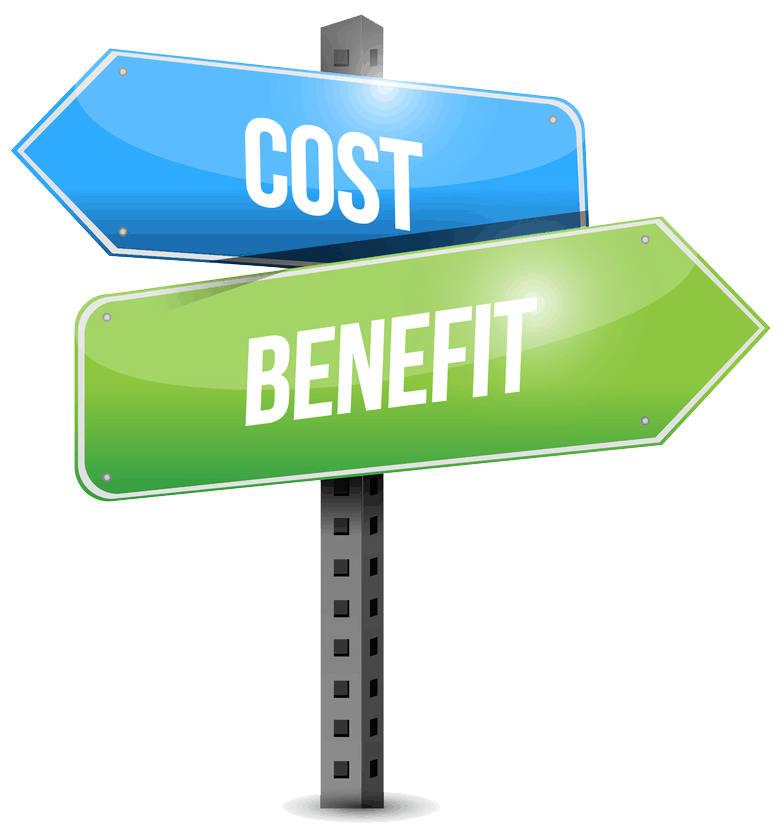
Making decisions that affect a company’s financial position or require significant investment demands a thorough evaluation. A cost-benefit analysis (CBA) details potential risks and gains of a decision and is helpful for understanding short- and long-term financial consequences. At the end of the CBA, business owners are better able to make a go/no-go determination. The exercise of a CBA is also a discipline that prevents impulsive decisions that may put a company in a poor financial condition. Think of the CBA as the ‘pause’ button before pressing ‘play.’
7 Steps to a Cost-Benefit Analysis
1. Define the goal. For example, “Determine the benefit of adding another shift of workers,” or “Determine the payback for a new piece of equipment.”
2. Make a chart. The rows will be for each cost and benefit item; group cost items first and benefit items second. Be sure to include every factor – cost or benefit – that affects the decision. Each analysis is different. For example buying a dump truck may require a new full-time salaried person to drive it; whereas buying a skid steer may not. Now set up columns – the first column for one-time items and then columns for ongoing items, with the number of ongoing columns defined by a time frame to analyze (usually months or years; e.g., twelve columns for 12 months, three columns for three years).
3. Itemize the tangible costs. Research and consider all costs that will contribute to the decision. Divide the costs between the columns – one-time costs in the first column and ongoing costs in the following columns. Examples of costs:
- Price of equipment or goods
- Real estate (i.e. rent, if applicable) and associated utilities
- Shipping, handling, and/or transportation costs
- Operating expenses
- Labor/staffing costs for wages, training, benefits
- Insurance and taxes
4. Determine intangible costs. Owner/manager time is valuable, and may contribute to the success of the proposed expansion of equipment, goods, or services. As with tangible costs, divide the intangible costs between the columns – one-time costs in the first column and ongoing costs in the following columns. In addition to management time and any other staff time spent on this goal (versus another goal or your/their regular responsibilities), intangible costs may include:
- Costs of lost business during a ramp-up time
- Risks such as customer loyalty or employee safety
- Business cycles or trends that could affect income
- Employee morale (positive or negative)
- Tying up credit
5. Estimate and list all of the proposed benefits. Draw conclusions based on similar projects or research into both tangible and intangible results. Benefits will usually be listed in the ‘ongoing’ columns. Examples of benefits include:
- Additional income
- Cost reductions
- Interest accrued
- Equity built
- Time savings
- Future Cost avoidance (i.e. overtime)
- Customer satisfaction
- Benefits to employees – safety, efficiency, job satisfaction
6. Do the math. Subtotal each group (tangible and intangible costs; benefits) by column. Then add up the subtotals of each column, subtracting the cost subtotals from the benefits. Expect to have a net cost in the first column and then net benefits in most or all of the remaining columns. Calculate the payback time of the decision by netting the initial cost of the decision (the first column) against the remaining columns until the net value becomes positive (i.e., the cumulative benefits generated equal the net cost in the first column). If each ‘ongoing’ is the same, then just divide the first column by the second column to give you the number of columns (usually months or years) to profitability.
7. Make a decision. Consider the tangible and intangible benefits vs. risks and the amount of time it will take to turn a profit. Is the amount of time it will take for an investment decision to pay off acceptable? Keep in mind that there is always uncertainty in projections of future circumstances. If it’s a push (benefits closely match costs so no clear winner) consider other options such as temp to hire, leasing, or subcontracting. This allows business owners to dabble in a market or service without making a substantial and potentially costly commitment.
The cost-benefit analysis will take research to use accurate numbers. But truly quantifying costs and benefits is essential to produce helpful information. Benefits must exceed costs for the decision to be viable. The purpose of the exercise is to be objective, and not just move ahead based on gut feelings. It also helps to talk through major decisions with a trusted advisor. Please contact us if we can help.



